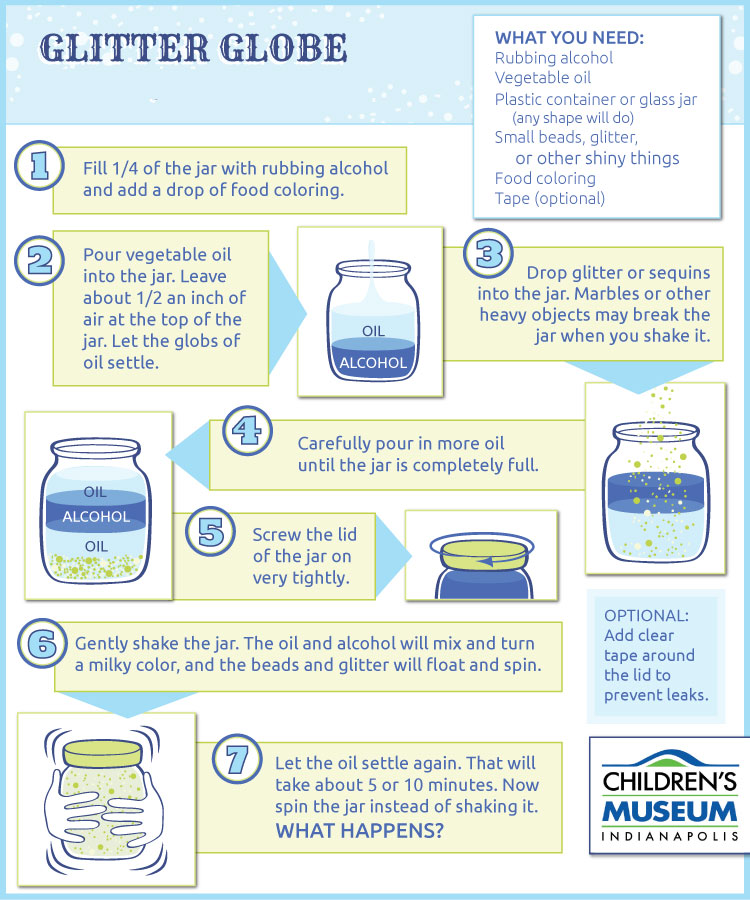
One of the go-to decorations for wintertime is the snow globe. Basic snow globes are pretty simple: a globe of leaded glass with a tiny winter landscape inside. The landscape is covered in tiny flakes of pretend snow, and the whole thing is swimming in liquid, typically water mixed with small amounts of other liquids that make the snow fall more slowly. Shake it up, and you get yourself a tiny little winter wonderland.
Our experiment today is a play on snow globes, but instead of a winter wonderland, you’ll be creating a polar playground. Not sure what we mean? Well, try it out, and then hit up the “Summary” at the bottom. Hint: in this context, “polar” doesn’t mean “that cold place where white bears live.” This experiment comes courtesy of the Exploratorium, and involves a little alcohol, a little water, and a little glitter.
Materials
- Rubbing alcohol
- Vegetable oil
- A glass jar or plastic container
- Small beads, glitter, sequins, and other shiny things
- Food coloring
Process
- Fill about 1/4 of the jar with rubbing alcohol and add a drop of food coloring.
- Pour vegetable oil into the jar. Leave about 1/2 an inch of air at the top of the jar. Let the globs of oil settle.
- Drop beads, glitter and sequins into the jar.
- Carefully, pour in more oil until the jar is full.
- Screw the lid on the jar very tightly.
- Gently shake the jar. The oil and alcohol will mix and turn a milky color, and the beads and glitter will float and spin. Observe what happens!
- Let the oil settle again. That will take about 5 or 10 minutes. Now spin the jar, instead of shaking, and observe what happens!
Summary
When you shake and spin your glitter globe, what happens? Did you notice that the alcohol and oil don't mix?
This happens because of the molecules that make up oil and alcohol. A molecule is made up of atoms, and atoms are made up of positively charged protons, negatively charged electrons and uncharged neutrons.
As Exploratorium explains, the atoms that make up alcohol molecules are arranged so that there is more positive charge in one part of the molecule and more negative charge in another part of the molecule. Molecules like this are called polar molecules.
Unlike alcohol's molecules, the charged particles in an oil molecule are distributed more or less evenly throughout the molecule. Molecules like this are called nonpolar molecules.
Polar molecules like to stick together because positive charges attract negative charges. So the positive part of a polar molecule attracts the negative part of another polar molecule, and the two molecules tend to stay together. When you try to mix alcohol and oil, the polar molecules of the alcohol stick together, keeping the oil molecules from getting between them. This means the oil and alcohol don't mix!
And, if you’ve ever tried to mix oil and water, you notice something very similar, and it’s for the exact same reason: water molecules are also polar!
You can see all of our at-home activities on the blog or on Pinterest.

 (
(










